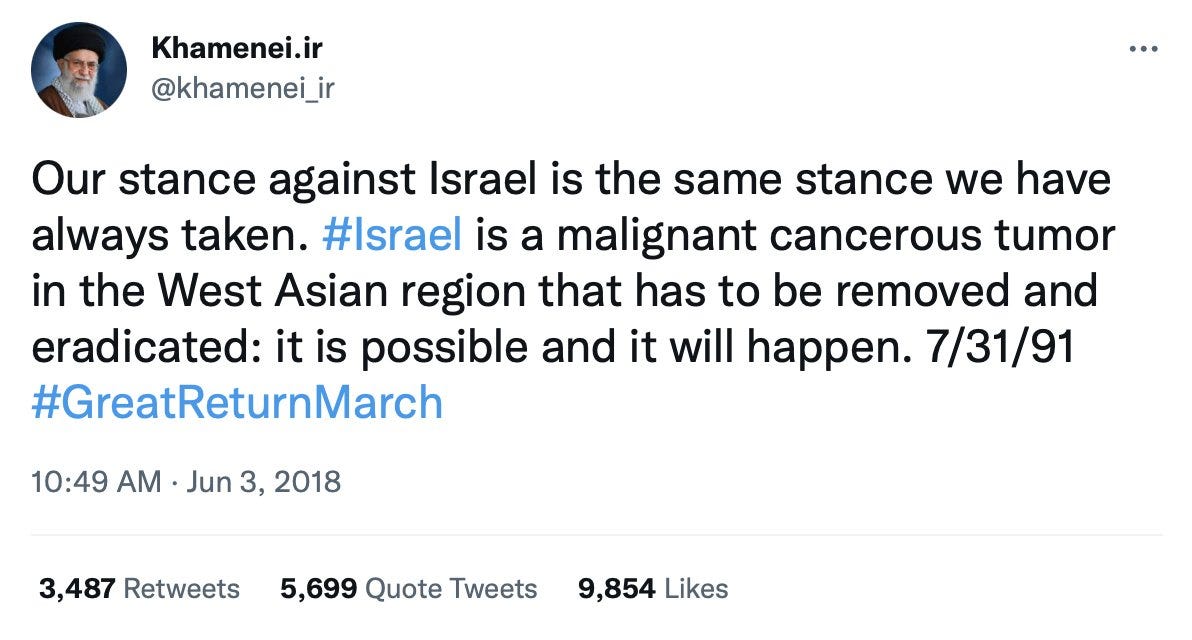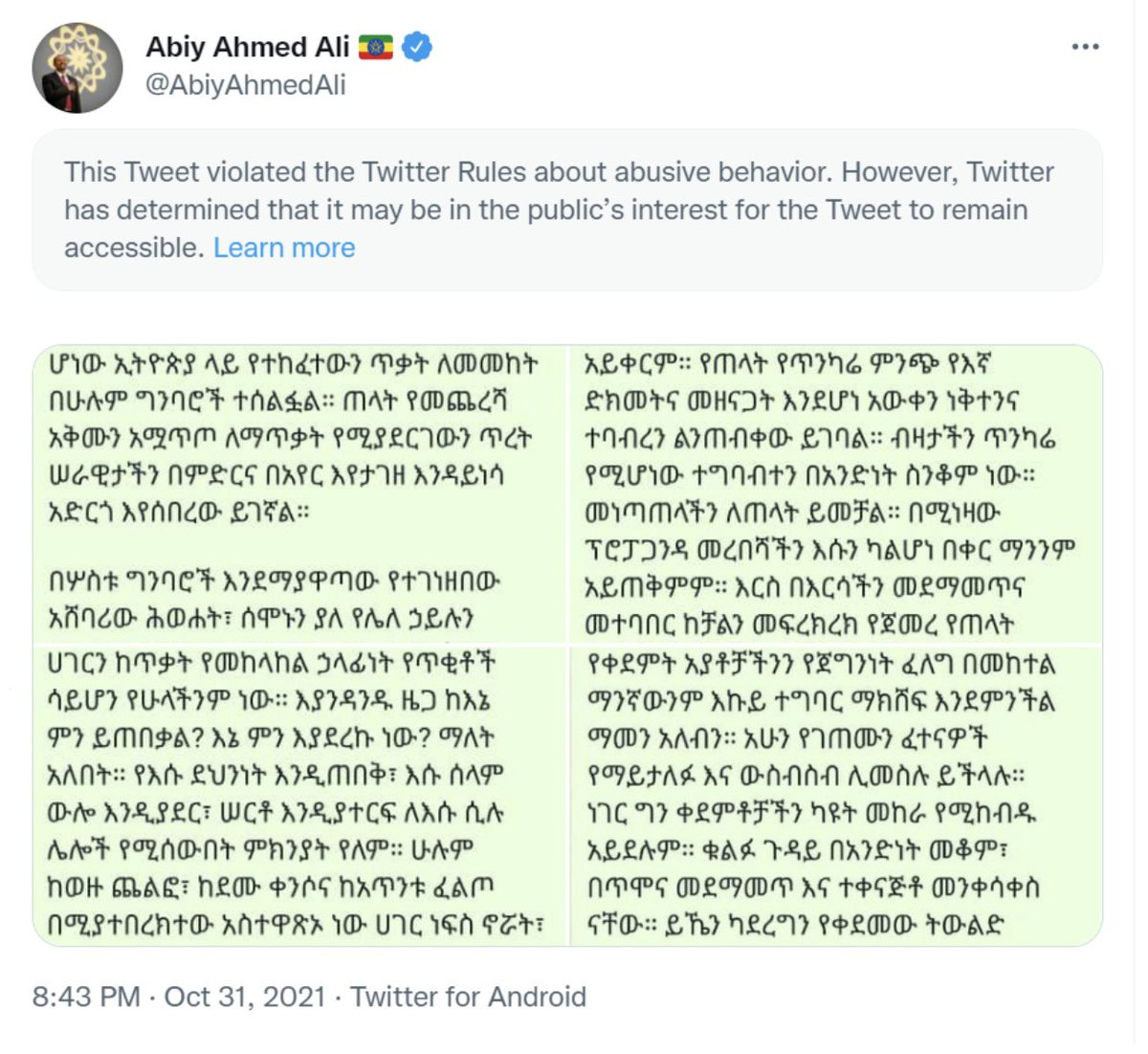Twitter Broke Its Own Rules To Ban Trump While Keeping World Leaders Who "Incited Violence"
Company employees concluded Trump's tweets did not incite violence before making up reasons for why they did

Twitter founder Jack Dorsey founded the social media platform with the mission “to give everyone the power to create and share ideas and information instantly, without barriers.” Said Dorsey, “Twitter cannot rightly serve as a public square if it’s constructed around the personal opinions of its makers… a key driver of a thriving public square is the … freedom of opinion and expression.”
But internal Twitter discussions made available to journalists Matt Taibbi, Bari Weiss, and me show that Twitter employees created secret blacklists that prevented tweets they disagreed with from trending and limited the visibility of particular users. For example, we discovered that Stanford Professor of Medicine Jay Bhattacharya, who warned the world of the danger of covid lockdowns on children, was still on a Twitter “Trends Blacklist.”
Twitter had denied that it was secretly censoring users and tweets in this way. In 2018, Vijaya Gadde, then the company’s Head of Legal Policy and Trust, and Kayvon Beykpour, the Head of Product, said, “We do not shadow ban,” adding, “And we certainly don’t shadow ban based on political viewpoints or ideology.”
Defenders of Twitter’s previous management say Bhattacharya and others weren’t “shadowbanned” and that users pushing misinformation, racism, or violence should be banned or kept on blacklists.
In their 2018 post, Gadde and Beykpour defined shadowbanning as “deliberately making someone’s content undiscoverable to everyone except the person who posted it, unbeknownst to the original poster,” which Twitter did not do to Bhattacharya, whose content was still discoverable.
Covid policy critics frequently spread harmful misinformation, say others, and Twitter did the best it could to moderate content during a complex pandemic.
And few objected, for instance, to when Twitter’s new owner, Elon Musk, suspended Ye (formerly Kanye) West for posting a swastika crossed with the Star of David, two weeks ago.
But in its public explanation, Twitter defined shadowbanning far more narrowly than how most people use the term. Moreover, it suppressed disfavored views secretly and thus violated Twitter’s own mission to serve as a “public square” characterized by “freedom of opinion and expression.”
As for Bhattacharya, his criticisms of covid lockdowns were grounded in the best-available science and merited to be heard, particularly during the middle of the pandemic. Had that occurred, then many millions of schoolchildren might not have been kept out of school for so long, and had their educations undermined.
Moreover, secretly censoring Bhattacharya for his disfavored ideas is hardly equivalent to Twitter’s highly-public suspension of West, whose swastika-Star of David hybrid hardly contributes to a socially useful debate like covid policy.
Twitter’s most controversial decision by far was to permanently suspend President Donald J. Trump from its platform on January 8, 2021, which upset many liberal and left-wing leaders around the world, not just Trump supporters in the United States.
French President Emmanuel Macron said he didn’t “want to live in a democracy where the key decisions” were made by private players. “I want it to be decided by a law voted by your representative, or by regulation, governance, democratically discussed and approved by democratic leaders.”
Russian opposition leader Alexey Navalny called Twitter’s suspension of Trump as “an unacceptable act of censorship.”
And Mexico’s progressive president, Andrés Manuel López Obrador, asked, “How can a company act as if it was all-powerful, omnipotent, as a sort of Spanish Inquisition on what is expressed? Yes, social media should not be used to incite violence and all that, but this cannot be used as a pretext to suspend freedom of expression.”
And now we have discovered that the Twitter employees who investigated the matter concluded on the morning of January 8 that Trump’s tweets had not incited violence — not even in a “coded" way.
In his first tweet, Trump said “The 75,000,000 great American Patriots who voted for me, AMERICA FIRST, and MAKE AMERICA GREAT AGAIN, will have a GIANT VOICE long into the future. They will not be disrespected or treated unfairly in any way, shape or form!!!”
Second, Trump tweeted. “To all of those who have asked, I will not be going to the Inauguration on January 20th.”
Twitter staff immediately decided that Trump had not violated Twitter’s policy against inciting violence. “I think we’d have a hard time saying this is incitement,” wrote one employee. “Just dropping in to say he tweeted again, but it’s a clear no vio[lation]. It’s just to say he’s not attending the inauguration.”
You can see two of the key message exchanges below. We have left visible the names of senior Twitter executives, who are public figures, and redacted the names of lower-level Twitter employees.

The context here matters. Not only did Twitter decide to ban Trump, despite the unanimous conclusion from the employees assigned to adjudicate the matter that he had not broken Twitter’s rules, it also decided to keep on its platform other heads of state and political leaders who Twitter employees concluded had incited violence.
For example, in October 2020, the former Malaysian Prime Minister said it was “a right” for Muslims to “kill millions of French people.” Twitter deleted his tweet for “glorifying violence,” but he remains on the platform.
Iran’s Ayatollah Ali Khamenei in 2018 tweeted, “#Israel is a malignant cancerous tumor in the West Asian region that has to be removed and eradicated: it is possible and it will happen.” Twitter neither deleted the tweet nor banned the Ayatollah.
And in October 2021, Twitter let Ethiopia’s Prime Minister, Abiy Ahmed, urge Ethiopians to take up arms against the Tigray region. Twitter slapped a warning on the tweet but did not ban the prime minister.
Why is that, exactly? Why did Twitter take the extraordinary step of de-platforming a sitting U.S. president rather than simply delete or put warnings on his tweets?







